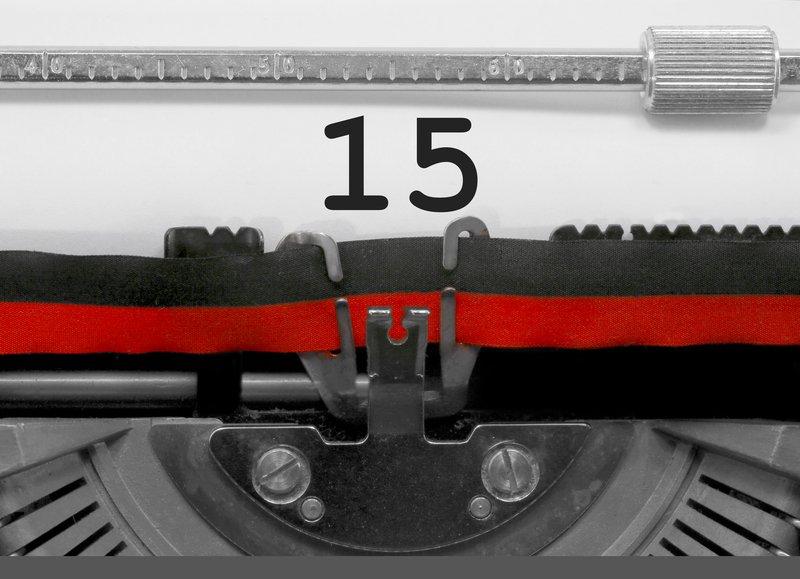An effective incentive scheme is an important way for small businesses to motivate their staff in order to improve performance and boost profits. Responding to incentives is part of human nature and employees like (and deserve) to be rewarded for their hard work.
For startups and small businesses who have a limited budget, designing a staff incentive scheme can seem like a real challenge. But you don’t need company cars and large annual bonuses to design an incentive scheme that has a positive impact in your workplace. Here’s how to create an incentive scheme that really works for your staff and your small business;
What are your goals?
Maintaining and boosting employee motivation and productivity are always at the heart of an incentive scheme, but not everyone is motivated in the same way and not everyone has the skills (or need) to achieve the same goals.
When making these decisions, small business owners should consider these two pertinent questions:
- Why does your business need to reward through an incentive?
- What specific business performance are you looking to drive?
Small businesses should evaluate their core business goals and establish objectives relevant to each employee that underpin these goals. These individual and/or team goals should then be used as a basic framework for an incentive scheme.
What can your small business afford?
Before designing a set of incentives and rewards for your employees, it’s vital to make sure that you won’t be losing money. Work out what your business can afford in terms of salary and rewards, and try to balance these with employee expectations.
The golden rule is not to make any promises about rewards that you won’t be able to keep!
Your base pay — the regular wages paid to your employee — is the first element of an incentive system. These costs should be built into your business plan from the start, and need to take into account legal obligations regarding National Minimum Wage, external market rates, the base pay of competitor companies, skills and education of the employee and the size of the role.
Your benefits plan and incentive scheme should be built up from here.
Designing an incentive scheme that really works
Incentives are rewards which are given when an employee hits their targets or achieves work goals. Traditionally, incentive schemes worked on financial rewards such as one-off pay bonuses, annual bonuses, and pay rises.
However, more and more innovative businesses and startups are introducing alternative, non-financial incentives which can be as simple as verbal praise or ordering in a coffee for everyone on the team.
Begin building your framework by following these 6 steps:
1. Aims
You should be very clear about the aims of your incentive scheme. The best way to design an effective incentive scheme is to keep it simple and build upwards from here.
2. Operation
Free Tide Business Bank Account - £50 Cashback!

Open a free business current account to qualify + enjoy 12 months free transactions. Read our Tide review.
How will your scheme operate, who will participate and how will you measure targets and achievements? You want to implement it in a way that is fair and workable. Look at incentive schemes used by other companies to see what works and what doesn’t.
3. Basics
What is the basic type of incentive you will be using? This could be a commission scheme, annual bonuses, extra holiday time, regular non-financial rewards and so on. Ideally, you will have a fixed value attached to a specific outcome.
4. Funding
How will your incentive scheme be funded? Discuss this with your accountant and determine the best way to factor in and finance additional costs.
5. Implementation
How will you continually monitor progress? Consider using memos, goal tracking, check-in meetings or performance management software. And when will you give rewards? This may be in-the-moment when a goal is achieved or at the end of the year or tax year, depending on the rewards you are using.
6. Communicate
How are you going to successfully communicate the plan to your employees? You need them to be on-board, have a clear understanding of and happy with the rewards in order to gain the desired effects of incentivising them.
Using goal-based incentives
Tying rewards to goals is an important way to ensure employees are focused on their tasks. Incentives also motivate your staff to achieve objectives that add value to your business. Incentives that are just given during reviews or at the end of the year are less likely to improve performance because they become expected by employees.
Employee incentive schemes and rewards can be either short or long-term, or a mix of both. Incentive schemes such as monthly production bonuses or sales commission for individual performance are generally seen to be short-term incentives. In comparison, profit share and share incentive schemes are long-term incentives.
Effective incentive schemes
An effective incentive scheme can’t be designed in just five minutes. It takes time, thought and all the necessary figures to plan an incentive scheme that works.
Excellent incentive schemes are designed off the back of a business’ finances and sensible assumptions about business’ projected turnover and future growth. These schemes will be motivating and fair, rewarding the right people for good work.
A poorly designed staff incentive scheme can end up costing more than planned and cause unnecessary problems.
Negative consequences can include rewarding employees for the wrong behaviours (or even rewarding the wrong employees) causing your best employees to be demotivated or, worse, disillusioned with the company values. It may also inadvertently create pay inequalities for employees working in the same roles.
There are a number of different factors and types of incentive schemes that can be implemented. Let’s take a look at the important points to consider:
Factoring in tax implications
Tax should be factored into rewards schemes as this may affect the success of a particular incentive. If the benefit is more tax efficient than salary, it is likely to prove a better incentive for employees over equivalent salary.
Company cars have seen a decline in popularity since the introduction of more stringent taxation rules. Salary sacrifice schemes, on the other hand, can be tax effective.
Consider employees’ domestic circumstances
Employees will view rewards differently depending on their domestic circumstances. For example, an employee with a family to support will have different priorities than a graduate who has only recently entered employment.
The employee with a family may prefer additional holiday time or childcare vouchers, which can be given as part of a salary sacrifice scheme, whereas a new graduate who has only just started working is likely to prefer financial incentives in order to pay back their student debt.
Google’s incentive scheme covers a number of bases, including offering employees family travel insurance on personal holidays, reimbursal for all classes and degree programmes related to their career, and onsite sports facilities. GoDaddy, a web hosting company, focus on team incentives and take employees on expeditions like whitewater rafting and trapeze classes during paid work hours.
Share incentive schemes
Small businesses may want to consider share incentive schemes. Generally speaking, companies are owned by their founders and any financial investors, however employees are fundamental to the day-to-day running and success of a small business or startup.
The Enterprise Management Incentive (EMI) Scheme can help you to do this in a tax-effective way. Find out more in our dedicated guide; Incentivising and Rewarding Staff with an EMI Share Option Scheme.
Rewarding dedicated employees with a share of the business, either by giving it to them or allowing them to be purchased if the company is sold, can strengthen employee loyalty and encourage hard work to help grow the business, especially in the early stages, by making an employee more invested in the company.
The Share Incentive Plan (“SIP”), which was introduced by the UK government as part of the 2000 Finance Act, include the following types of shares:
1. Free shares
Up to £3,000 of shares can be given per year to each employee.
2. Partnership shares
Employees can buy up to £1,500 worth of shares per year.
3. Matching shares
Business owners can reward commitment by giving up to two matching shares for each partnership share an employee buys.
4. Dividend shares
Companies can provide for dividends paid on free shares, partnership shares and matching shares to be reinvested in further shares.
A company’s ability to incorporate shares as part of their incentive scheme will depend on the flexibility of the company owner and stakeholders.
Finding the incentive scheme that works best for your small business
Every business is different and what is an effective incentive scheme for one small business may be ineffective for another. Your incentive scheme should reflect your business’ budget, values and employees’ preferences to encourage business growth and team spirit.
For new businesses, finding the most effective incentive scheme will be trial and error. You can need to continually rethink your measures and rewards as you gain new employees, build your brand and expand your business over time.
Always check the cost of your incentive scheme in comparison to the additional revenue or profit achieved. If there isn’t a positive correlation or movement towards one, then that indicates adjustments are needed.
This excellent guide has been written for ByteStart by Marc Bishop and Sharon Crooks. Marc Bishop is the managing director of PlusHR and Sharon Crooks is a leading HR Consultant. Marc and Sharon are the co-authors of HR for Small Business for Dummies.










